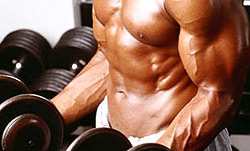
Massage is an important part of the training process for many purposeful athletes who want to achieve swift recovery after extensive training or competition. Massage also plays an important role in injury prevention due to overuse or overstraining the body and in the rehabilitation process after injury.
Every athlete has experienced heighten muscle tension from training and competing. The usual signs of such side-effects are limited performance, reduce flexibility and increase risk of injury not to mention pain. Pain is the result of unbalanced muscles becoming inflamed because they were not handled properly over a long period of time, which can lead to discomfort in the neck, shoulders, arms back, pelvis, groin, knee and so forth.
Heightened muscle tension also places more stress on muscles and tendons; particularly where they attach themselves at various connections. As a result, an athlete can experience physiological and motivational problems with his training. The immune and neurological system is damaged, which can be a huge setback for any athlete. Missing a competition because of being ill or injured is no fun to say the least.
But the flip side to all these problems is basic massage therapy where the door can be opened to a holistic approach to recovery. Many athletes claim the following benefits to massage techniques:
- Reduction of sensations of fatigue
- More physically calm, mentally relaxed with better sleeping habits
- Less muscle spasm and better muscle tone
- Faster recovery, more agile and effective training
- Breaking down and massaging out adhesions or “muscle spurs” and reducing risk of injury
- Increasing range of motion and fluid movement of the body
- Decrease in scar tissue after injury, which leads to more flexibility
- Identifying potential trouble spots before developing into symptoms. A trained massage therapist can easily detect soft tissue under stress, which is below the athlete’s awareness, and then can be corrected before problems actually surface while training or competing.